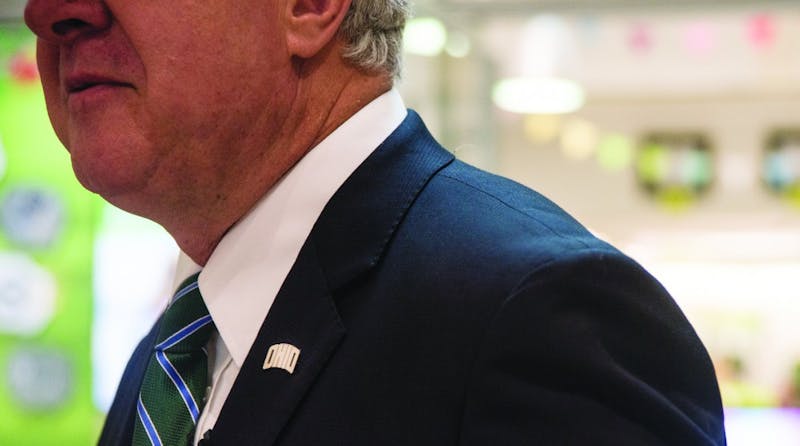Landing Page
Special Projects
This story is part of a series of specially designed stories that represents some of the best journalism The Post has to offer. Check out the rest of the special projects here.

MEAGAN HALL
09.07.17
The departure of former Ohio University President Roderick McDavis last spring didn’t just signal the end of the 13-year tenure of the first black and second alumnus president.
When McDavis left office last spring, so did arguably the biggest Ohio Bobcats fan.
The 1970 OU alumnus was a tireless advocate of Ohio athletics during his time in office and was constantly seen at Bobcats games, especially at his designated seats at The Convo and Peden Stadium.
Three years into his presidency, the athletic department eliminated four programs and then •lost its athletic director the next year, but McDavis left behind a legacy of absolute stability.
OU President Duane Nellis joins the Ohio Bobcats at a time where Ohio’s athletics may be at its peak. And Nellis, the former president at Big 12 powerhouse Texas Tech University, is certainly no stranger to the world of college athletics.
“Athletics is, in many ways, the front porch of how many Americans see the university."Duane Nellis, 21st president of OU
A former member of the BCS Presidential Oversight Committee, Nellis was one of a dozen university presidents who approved the college football playoff system.
While he was president of University of Idaho and a member of the oversight committee, Nellis pushed for more representation of mid-majors and lamented the role major TV contracts have in pushing smaller programs out of competitive conferences.
“It's drained away some of the teams that have been a part of our conferences,” Nellis told Sports Illustrated in 2012. “It really does create this sense of the haves versus the have-nots. It kind of undermines what I feel should be the philosophy of the NCAA and the BCS in the whole area of what's best for the student-athlete.”
Nellis’ Idaho Vandals, a mid-major program, went through a similar departure in 2012 when its former conference, the Western Athletic Conference, discontinued football. The team played as an independent in 2013, his final year as president of the university.
With Ohio, Nellis likely won’t face any talk about conference realignment, but that doesn’t mean he won’t face challenges in the coming years.
The Sook Center, scheduled to begin construction last month, poses a controversial balancing act for the new president. Though praised by those close to athletics for its ability to attract potential recruits, it has come under fire by Faculty Senate.

Abby Day | ILLUSTRATION
Since the announcement of the proposal three years ago, the Faculty Senate has passed resolutions calling for the university to abandon efforts to construct the building, according to a previous Post report. The project is being funded through fundraising efforts by the university. McDavis was a supporter of the project.
“Building a new academic center supports our vision of providing a top-tier student learning experience for our student-athletes,” McDavis said in a university news release. “They are students first and foremost and providing Ohio student-athletes with a facility will only help us to achieve our goal of supporting their academic success and degree attainment at a higher level.”
Nellis has not yet made a statement about the Sook Center, but his response would dictate his stance on the relationship between finances and the university’s athletic department and how the university might proceed in the future.
Last year, the university allocated 63.6 percent of the athletic department’s $31.8 million revenue, according to the USA Today.
Nellis acknowledged that the university’s athletic department doesn’t generate as much revenue as “that school up north,” a reference to Ohio State University. He said, however, that it does lead to other opportunities within the university, including the sport management program.
“Athletics is, in many ways, the front porch of how many Americans see the university,” Nellis said in a presidential search forum on Jan. 10. “It may not be fair, but in many ways, it is the reality. … Overall, I feel like athletics is an important part of the institution, but it needs to be balanced with the academic side.”
Landing Page
This story is part of a series of specially designed stories that represents some of the best journalism The Post has to offer. Check out the rest of the special projects here.